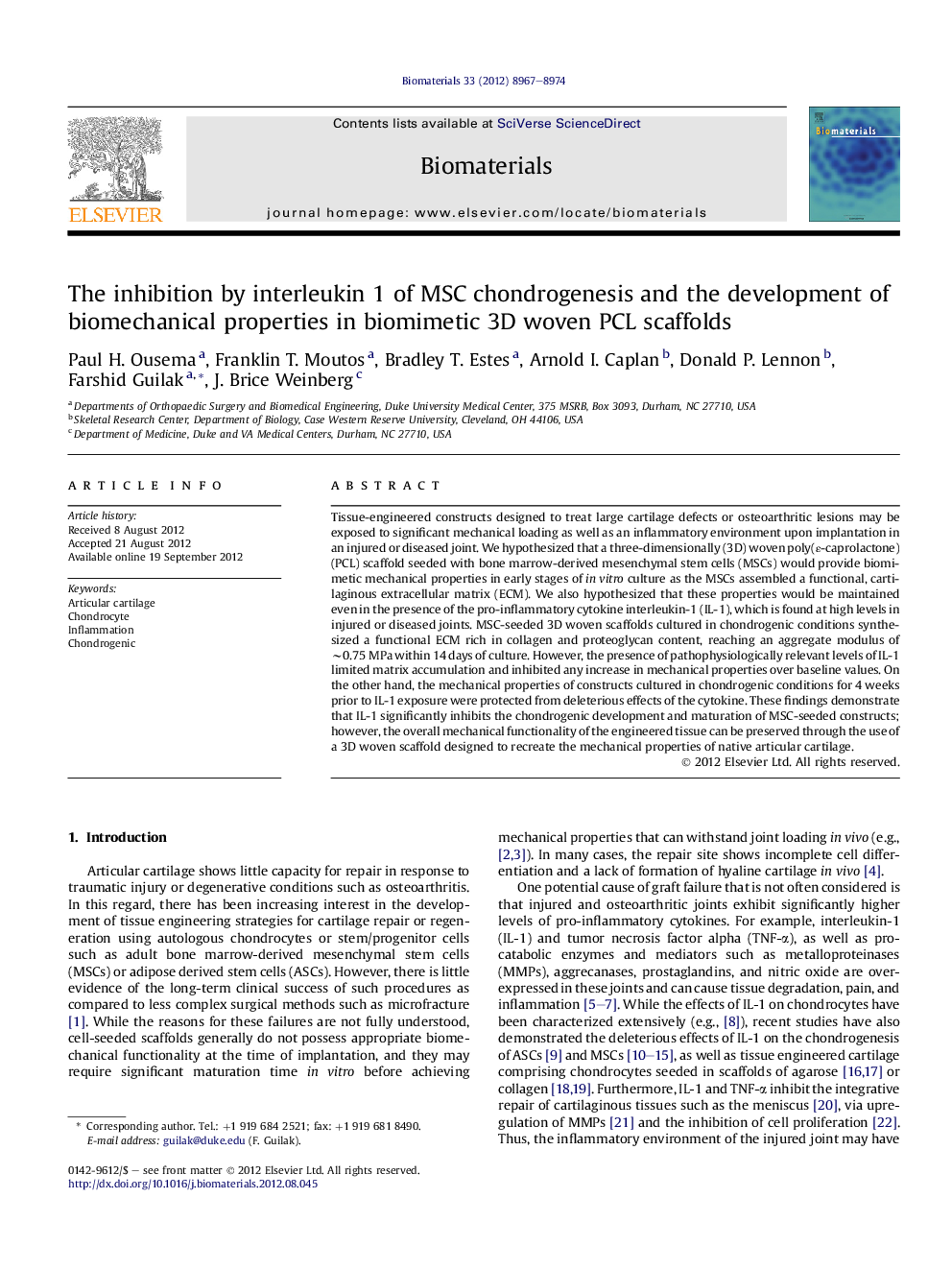| Article ID | Journal | Published Year | Pages | File Type |
|---|---|---|---|---|
| 6592 | Biomaterials | 2012 | 8 Pages |
Tissue-engineered constructs designed to treat large cartilage defects or osteoarthritic lesions may be exposed to significant mechanical loading as well as an inflammatory environment upon implantation in an injured or diseased joint. We hypothesized that a three-dimensionally (3D) woven poly(ε-caprolactone) (PCL) scaffold seeded with bone marrow-derived mesenchymal stem cells (MSCs) would provide biomimetic mechanical properties in early stages of in vitro culture as the MSCs assembled a functional, cartilaginous extracellular matrix (ECM). We also hypothesized that these properties would be maintained even in the presence of the pro-inflammatory cytokine interleukin-1 (IL-1), which is found at high levels in injured or diseased joints. MSC-seeded 3D woven scaffolds cultured in chondrogenic conditions synthesized a functional ECM rich in collagen and proteoglycan content, reaching an aggregate modulus of ∼0.75 MPa within 14 days of culture. However, the presence of pathophysiologically relevant levels of IL-1 limited matrix accumulation and inhibited any increase in mechanical properties over baseline values. On the other hand, the mechanical properties of constructs cultured in chondrogenic conditions for 4 weeks prior to IL-1 exposure were protected from deleterious effects of the cytokine. These findings demonstrate that IL-1 significantly inhibits the chondrogenic development and maturation of MSC-seeded constructs; however, the overall mechanical functionality of the engineered tissue can be preserved through the use of a 3D woven scaffold designed to recreate the mechanical properties of native articular cartilage.
